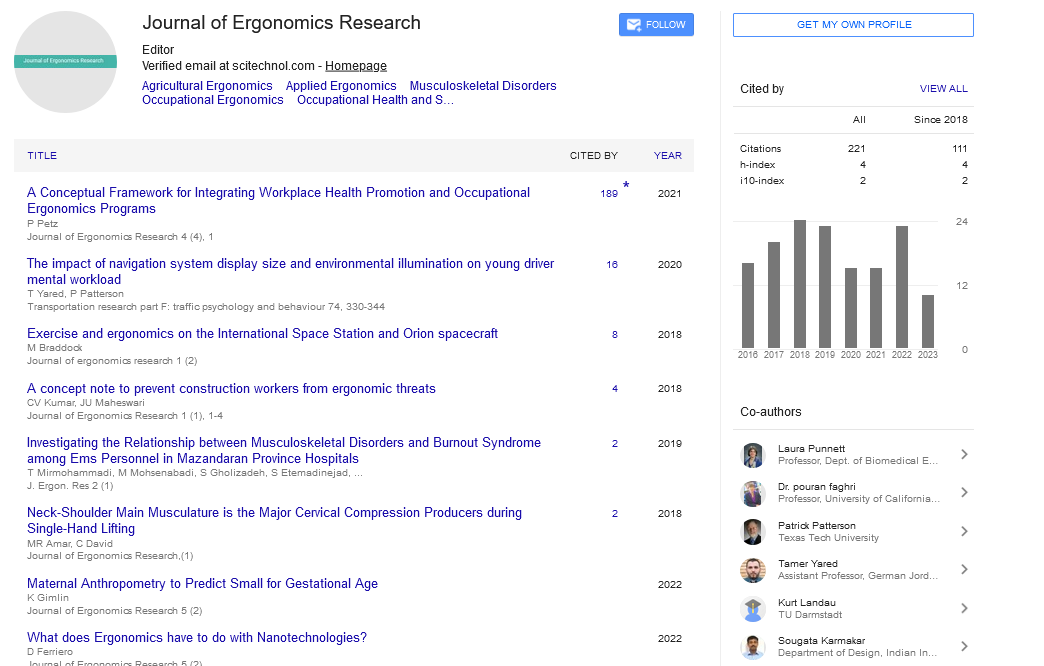Research Article, J Ergon Res Vol: 3 Issue: 1
The Impact of Navigation System Display Size and Environmental Illumination on Young Driver Mental Workload
Yared T* and Patterson P
Department of Industrial, Manufacturing & Systems Engineering, Texas Tech University, Lubbock, Texas-79409, USA
*Corresponding Author : Yared T, PhD
Department of Industrial, Manufacturing & Systems Engineering, Texas Tech University, Lubbock, Texas-79409, USA
Tel: 8064715899
E-mail: tamer.yared@ttu.edu
Received: January 30, 2020 Accepted: February 13, 2020 Published: February 20, 2020
Citation: Yared T, Patterson P (2020) The Impact of Navigation System Display Size and Environmental Illumination on Young Driver Mental Workload. J Ergon Res 3:1. doi: 10.37532/jeor.2020.3(1).108
Abstract
Background: Driver distraction is a major cause of road accidents and has a great influence on road safety. In vehicles, there are many distracting sources; one of the most common is navigation systems. The navigation system can distract the driver due to searching for information provided through its display. While driving, the driver can get distracted when following the GPS directions and reading the GPS information provided by its display; these tasks are considered secondary tasks. These secondary tasks take the driver’s attention from the primary task of driving and may cause poor driving performance, increasing the risk of accidents. Methods: In this paper, the effect of the environment (i.e., urban area and rural area), the navigation system display size, environmental illumination, and gender on young driver between 18 and 29 yrs old mental workload was investigated. The mental workload was evaluated through an experiment using a driving simulator which simulated the above-mentioned conditions. To evaluate each driving condition, the NASA- TLX (NASA Task Load Index) workload assessment tool, with a distraction element added to it, was introduced and used to assess the mental workload and distraction by the GPS display. Results: The assessment showed a higher overall task workload for urban area and night driving as compared to a rural area and daytime driving. Moreover, the results showed a greater distraction by the GPS display in the urban area compared to driving in the rural area. The subjects were also distracted when using the small GPS compared to using the large GPS. Conclusion: In conclusion, urban area driving and night driving creates higher workload, and small GPS display leads to more distraction while driving.
 Spanish
Spanish  Chinese
Chinese  Russian
Russian  German
German  French
French  Japanese
Japanese  Portuguese
Portuguese  Hindi
Hindi 